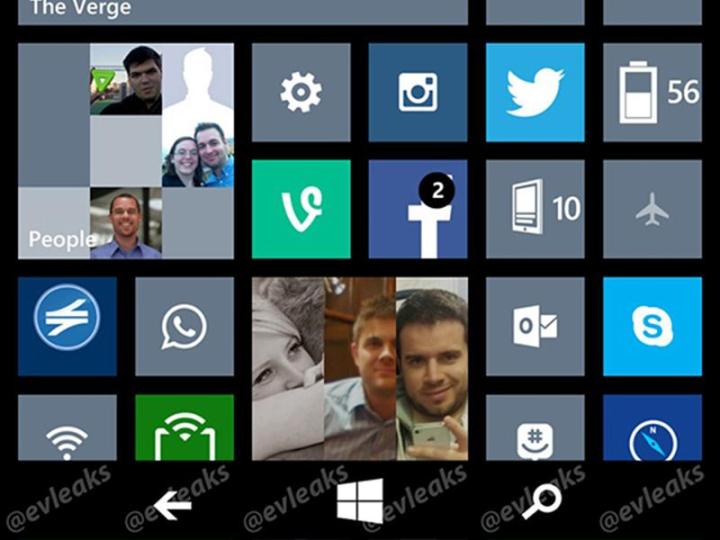
Leaked screenshots from the upcoming 8.1 release of Windows Phone suggest that the mobile OS is following Android’s lead by moving its navigation buttons from the physical to the virtual. A screengrab tweeted by notable mobile rumormonger @evleaks shows the back, Start and search buttons sitting at the bottom of the software interface, whereas they currently exist as capacitive buttons on today’s Windows Phone handsets.
The screenshot confirms earlier rumors posted by The Verge, who said that “sources familiar with Microsoft’s plans” suggested the company was moving towards Android-style navigation keys built into the software rather than the hardware. Part of the reasoning behind the move is that it reduces manufacturing costs for handset makers. Microsoft is believed to be pushing both HTC and Samsung to develop a fresh series of Windows Phones.
While the picture provided by @evleaks doesn’t shed much light on the look and feel of Windows Phone 8.1, it is interesting to note the likely change in navigation. The operating system should be unveiled at the BUILD 2014 conference, which is running from April 2-4 next year. Anticipated new features include a revamped notification center, Skype improvements and a ‘Cortana’ personal assistant to take on Google Now and Siri.
Microsoft’s Windows Phone platform continues to lag well behind the Android and iOS juggernauts, but if enough big name apps can persuaded to join Instagram in making the jump over, the OS can at least consolidate third place. Microsoft Threshold, the next major update cycle in the pipeline from Redmond, is expected to tie Windows and Windows Phone more closely together.
[Image courtesy of The Verge / @evleaks]
Editors' Recommendations
- 5 phones you should buy instead of the Google Pixel 8
- 8 iPhone browser apps you should use instead of Safari
- The best Samsung phones in 2024: our 8 favorite Galaxy handsets
- This crazy case adds a BlackBerry-inspired keyboard to your iPhone
- One of my favorite Samsung features is coming to OnePlus phones
